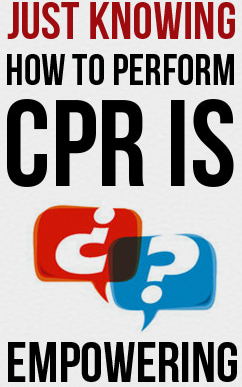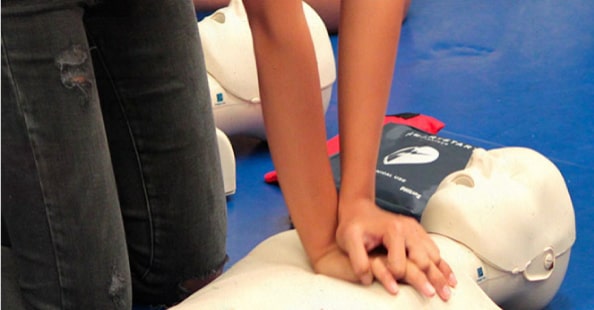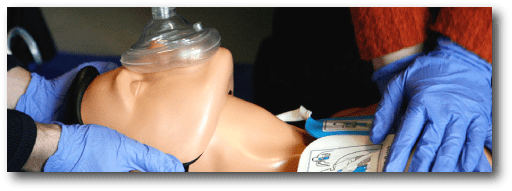
 You’re ecstatic and overjoyed to bring this new life into the world, as you should be! Chances are, during the nine months you waited in anticipation and did all that you could to prepare. You and your spouse likely read books, baby-proofed the home, and bought the appropriate clothes, bedding, toys, and food.
You’re ecstatic and overjoyed to bring this new life into the world, as you should be! Chances are, during the nine months you waited in anticipation and did all that you could to prepare. You and your spouse likely read books, baby-proofed the home, and bought the appropriate clothes, bedding, toys, and food.
New parents are crazy busy during the first few months and years of their baby’s life. There is so much growing up to do, and you don’t want to miss a beat. However, in the midst of all the
milestones and cuteness, accidents do happen. Let us give you two scenarios and decide which parent you want to strive to be like: the adult in scenario one, or the adult in scenario two.
Scenario 1
One day everything is going smoothly. You place your baby in a safe space to explore, but, suddenly, you notice that he cannot cry, cough, or make noises. You run over to your child and notice that his skin is reddening, but you freeze and don’t know what to do. Unfortunately, no one is home, and you are running out of precious seconds.
Scenario 2
During mealtime, everyone is chatting with each other as your toddler is eating from her highchair tray. All of a sudden her eyes get big and she begins coughing. You immediately open the baby’s mouth and attempt to clear the airway but to no avail. You waste no time in asking a family member to dial 911 while you begin to administer the proper back blows and chest compressions.
While no new parent wants to imagine the horror of his or her infant or small baby choking, it does happen. What can be the difference between life and death for your child is the fact that you acted quickly and efficiently to help your baby when he could not breathe.
That’s why it is vital that you take the time to educate yourself on the proper way to handle a small baby when they cannot breathe. While you may know what to do in the same situation with other adults, the signs to look for, performing the Heimlich, and CPR are all different for infants. Their small bodies not only require special care, but they make a choking situation even that much more dangerous.
Unsure of what to do or how to handle a choking infant or small child? Don’t worry! Below we will take you through the steps of the proper way to perform both the Heimlich and CPR on small children, as well as some tips that will help prevent choking.
Choking
Nothing is scarier than seeing your baby choke. However, what’s important to remember in these situations is that fast reactions and swift movements are key. Here is what to do:

Step 1
Assess the situation quickly. If your baby cannot cry or cough, then chances are
something is blocking their airway. Open the baby’s mouth and see if you can see the object. Even if you don’t see anything, if their is making either odd noises or no sound at all when opening their mouth, and/or turning red or blue, their airway is fully blocked.
If your baby is coughing or gagging, that means their airway is only partially blocked, meaning they can still breathe. In these situations, it is best to allow the baby to continue to cough in order to dislodge the object.
However, if the airway is fully blocked, or they cannot seem to cough up the object, ask someone to call 911 as you prepare to administer back blow and chest thrusts. If you happen to be alone with the baby, don’t wait any longer than about two minutes before you call 911.
If you have reason to believe your baby cannot breathe due to a swollen throat, call 911 immediately. This is an indication of an allergic reaction, and the Heimlich or CPR cannot help.

Step 2
Now you have to administer back blow and chest thrusts. First, attempt to remove the blockage with back blows. Do this by carefully positioning them face up on one
forearm while you cradle the back of their head with that hand. Place your other hand and forearm on their front, so that you have them securely between your forearms.
Next, turn them face down, while you use your thumb and forefinger to hold their jaw. Place your arm on your thigh in order for the baby’s head to be lower than their chest. Using the heel of your hand, deliver five firm back blows between the baby’s shoulder blades. While you do this, maintain the support you gave their head and neck by firmly keeping their jaw between your thumb and forefinger.
With the hand that has been delivering the back blows on the back of the baby’s head, rest your arm along their spine. Carefully turn them over while keeping your other hand and forearm on their front.
Next come the chest thrusts. Continue to hold their jaw while sandwiching them between your forearms. Lower your arm that is supporting their back onto your opposite thigh, still keeping the baby’s head lower than the rest of their body.
Place two or three fingers in the center of the baby’s chest. To do a chest thrust, push straight down on the chest about 1 1/2 inches. Then allow the chest to come back to its normal position. Repeat this until you have completed five chest thrusts. Keep your fingers in contact with the baby’s breastbone. Note that the chest thrusts should be smooth, rather than jerky.
Continue alternating five back blows and five chest thrusts until the object is forced out or your baby coughs forcefully, cries, or breathes on their own. If they’re coughing, let them try to cough up the object.
However, if the object is not dislodged and your baby becomes unconscious, you will have to perform modified CPR.
 If it comes to performing CPR on your Baby until medical personnel get there, you will need to understand how to properly administer it in order to keep the blood circulating to the baby’s organs to avoid brain damage and death.
If it comes to performing CPR on your Baby until medical personnel get there, you will need to understand how to properly administer it in order to keep the blood circulating to the baby’s organs to avoid brain damage and death.
Quickly and gently place the child on his back on a firm, flat surface. Tilt his head back with one hand and just slightly lift his chin with the other. Note that you don’t have to tilt a small baby’s head very far to open the airway.ay.
Check to see if the baby is breathing.
If the baby isn’t breathing, you have to administer what are called rescue breaths. To do this, cover the baby’s nose and mouth with your mouth, and gently exhale into his lungs only until you see his chest rise. Make sure you pause between rescue breaths to let the air flow back out.
It’s important to remember that a baby’s lungs are much smaller than ours, so it takes much less than a full breath to fill them. Breathing too hard or too fast can damage their lungs.
Next, you need to administer chest compressions or thrusts again (described above.) Do 30 chest compressions at the rate of 100 per minute. Count out loud: “One and two, and three and four …,” pushing down as you say the number and coming up as you say “and.”
When you complete 30 compressions, give two rescue breaths. Repeat this sequence until help arrives or you see obvious signs of consciousness return.
Even if the baby returns to consciousness and seems fine by the time help arrives, a doctor will need to check him out to make sure that the airway is completely clear and there are no internal injuries.
Ways to Minimize Your Risk
While you cannot always prevent choking, nor can your eyes be everywhere, you can make sure that you have done everything in your power to minimize your child’s risk. Here are a few tips that you and your family can follow to make sure that choking doesn’t happen.
 You should not give children 5 years old or younger small, round, or hard food items. This means items such as gum, hard candy, nuts, grapes, chunks of hot dogs, popcorn, marshmallow, pieces of carrots, etc.
You should not give children 5 years old or younger small, round, or hard food items. This means items such as gum, hard candy, nuts, grapes, chunks of hot dogs, popcorn, marshmallow, pieces of carrots, etc.
 Cut up your baby’s food into small bites. If you are feeding your child, be sure to hand her pieces of food one by one, and only give another when she has fully chewed and swallowed the piece before.
Cut up your baby’s food into small bites. If you are feeding your child, be sure to hand her pieces of food one by one, and only give another when she has fully chewed and swallowed the piece before.
 Kids often shovel as much food as they can into their mouths. Instruct them on how to properly finish chewing their mouthful before attempting to eat or drink more. Lead by example.
Kids often shovel as much food as they can into their mouths. Instruct them on how to properly finish chewing their mouthful before attempting to eat or drink more. Lead by example.
 Make sure your children play with age-appropriate toys. Small pieces of a game board, marbles, and Lego pieces are bound to end up in a small child’s or toddler’s mouth. Keep all items like these out of reach. If you are unsure of a toy or game, look for the label or instruction for age guidelines. Also, it helps to sign up for product recalls; that way, if a toy has small pieces that are a choking hazard, you are informed.
Make sure your children play with age-appropriate toys. Small pieces of a game board, marbles, and Lego pieces are bound to end up in a small child’s or toddler’s mouth. Keep all items like these out of reach. If you are unsure of a toy or game, look for the label or instruction for age guidelines. Also, it helps to sign up for product recalls; that way, if a toy has small pieces that are a choking hazard, you are informed.
 Never leave children unattended while they are eating or playing with puzzles or other toys with small pieces.
Never leave children unattended while they are eating or playing with puzzles or other toys with small pieces.
 Keep magnets, buttons, jewelry, loose change, cords, and strings out of your child’s reach. For adventurous tots, make sure they cannot climb on furniture and access these things. Leaving these types of items left on the edge of tables or counters is just begging for grabby hands to reach for them. Make sure that if you have to place them on an open surface, they are in the middle of the table and nowhere within an arm’s reach.
Keep magnets, buttons, jewelry, loose change, cords, and strings out of your child’s reach. For adventurous tots, make sure they cannot climb on furniture and access these things. Leaving these types of items left on the edge of tables or counters is just begging for grabby hands to reach for them. Make sure that if you have to place them on an open surface, they are in the middle of the table and nowhere within an arm’s reach.
 Make sure all chairs, barstools, ladders, and stepstools are out of reach.
Make sure all chairs, barstools, ladders, and stepstools are out of reach.
 Put up safety gates to make sure wandering tots remain in
Put up safety gates to make sure wandering tots remain indesignated or “safe” areas.
 When trying to minimize risks of choking and other dangers, parents often childproof the home, but even these efforts can overlook other hazards. It might help to look at your house from their point of view. If you need to, get down on your hands and knees, and look for any small objects that could prove to be a choking hazard.
When trying to minimize risks of choking and other dangers, parents often childproof the home, but even these efforts can overlook other hazards. It might help to look at your house from their point of view. If you need to, get down on your hands and knees, and look for any small objects that could prove to be a choking hazard.
The Takeaway
While we walked you through a step-by-step guide on how to react and what to do when accidents happen and life goes awry, you shouldn’t rely on this as your only guide. Go to choking and CPR training. There are plenty of others sources and ways to get first-hand information, classes, and experience on the proper way to handle an infant and/or small child when they choke.
Anyone, including family members and caregivers, can take these courses and training. And they should. If you plan to leave your child in the care of someone else, it is important that they also – not just you – obtain the correct knowledge and procedures. When it comes to first aid and CPR courses, you now have options. While there will always be community centers that host courses and Red Cross instruction, they are often only held on certain days and times. It’s a lot for someone to give up all that time at once.
However, you do have another choice. Thanks to today’s internet, anyone is able to learn online the proper care and techniques to administer to a choking child or infant. Classes are completed on your terms, meaning you can build a course around your schedule.
While there are many online courses to choose from, Simple CPR bases all their guidelines on AHA standards and are nationally, as well as internationally, accepted. Online courses are also helpful, as there is no pressure associated with test taking. When you complete the appropriate course and are ready to take the exam, you do so in the comfort of your own home, and you are able to retake it until you pass. Plus, you are able to print your card immediately.
Whether you need to complete a course due to having a new baby in the family, or to pursue your dreams of becoming a caregiver, nanny, or nurse, remember: There are plenty of options that are available to you. Be sure you are properly trained to protect the health and wellbeing of your child. You’ll be glad you did.




 That said, imagine how great it would feel to know that you could do something to help someone else if you ever found yourself in such a situation. Why not be the bystander who is able to say you know what to do? You could easily wind up being the reason someone lived to see another day.
That said, imagine how great it would feel to know that you could do something to help someone else if you ever found yourself in such a situation. Why not be the bystander who is able to say you know what to do? You could easily wind up being the reason someone lived to see another day.




















